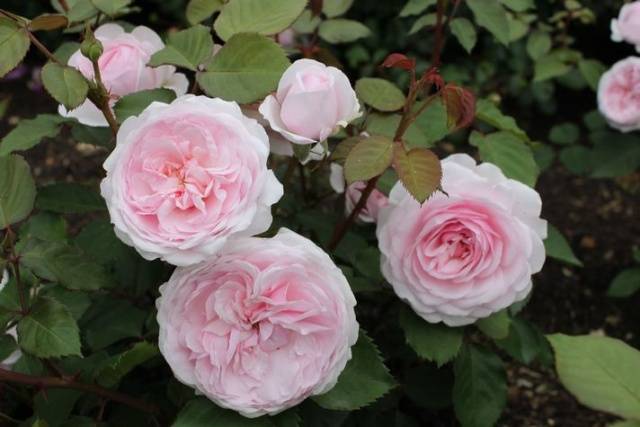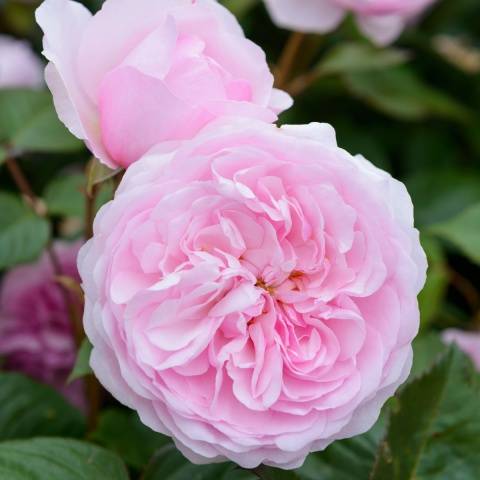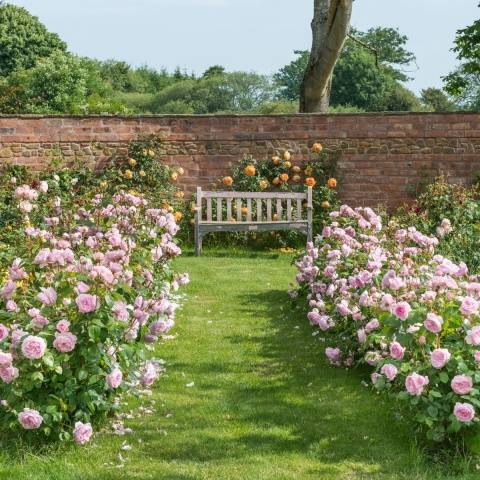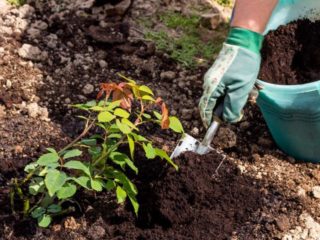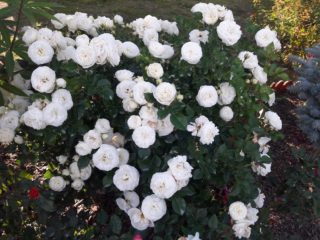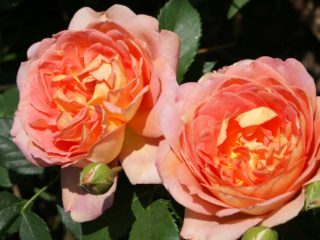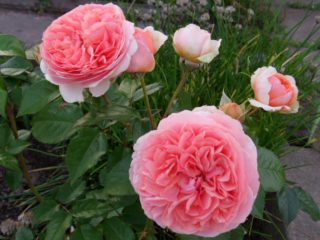English roses Is a relatively new variety of these garden flowers. The first "Englishwoman" only recently celebrated its half-century anniversary.
The author and founder of this beauty is D. Austin, an ordinary farmer from England. To develop a new series of flowers, he was inspired by the sight of old French varieties of roses. He decided to develop a new variety that would resemble ancient plants in appearance, but had a strong smell and a beautiful bush shape. The heroines of today's article are the roses Olivia Rose Austin.
The result of crossing the old Gallic variety with the modern floribundas gave an absolutely amazing success. Further hybridizations turned out to be only minor resurfacing of the result obtained initially. Subsequent work was aimed at obtaining re-flowering plants and strengthening the immune system.
On the Russian market, "Englishwomen" began to appear recently. The reason is that Austin's company is very attentive to how their pets will feel in the cold, harsh continental climate. After all, these flowers cannot be called frost-resistant. But experienced gardeners successfully acclimatize unusual varieties: they are very beautiful!
Description
This magnificent variety is considered by many experts to be the best in the Austin constellation.
In 2014, the variety was highly appreciated at the exhibition in Chelsea (2014, May). The variety was bred in 2005. Roses belong to the category "scrub" (landscape, park). Perfect for planting on lawns and flower beds. A trimmed bush can be shaped in a variety of ways. The diameter of the flowers ranges from 7 to 8 cm. Like the vast majority of English varieties, the flowers are in the form of cups. The rose is characterized by increased terry. The color is very beautiful, light pink. When the rosette is fully opened, the middle of a yellow-golden hue is noticeable. The flowers have a strong aroma with a fruity tinge.
The foliage is bright, dark in color, glossy. It creates the perfect backdrop for delicate flowers. Young leaves have a brownish-burgundy hue. The bush is almost spherical, beautifully formed. Its height is 1 m, width is 0.75 m. The bush is formed by strong branches, each of which ends in one single flower. The variety has good immunity and disease resistance. Many growers note that, unlike most "Englishwomen", this variety tolerates severe winters well.
Care features
Olivia Rose Austin prefers fertile soils with neutral reactions, saturated with useful mineral and organic substances. Drainage is a prerequisite.
- It is better to choose a site for roses that is well lit, not too windy. The planting hole is prepared so that its dimensions are commensurate with the root system of the plant. At the end of planting, the rose bush must be well watered. The container rose does not need immediate feeding, since the clod of earth has enough fertilizer. The next top dressing will be required in the summer.
- Watering frequency: 1-2 times a week in small portions so that the soil is well saturated with water. In this case, not the bush itself is watered, but the soil. In a dry summer, the rose will respond to the diligent gardener with gorgeous flowers.
- Fertilizers are used complex.The frequency of fertilization for roses is once every two weeks. Loves this variety and rotted organic fertilizers as mulch. It contributes to a longer retention of moisture in the soil, and is a source of nutrients for the plant.
Pruning is the most important moment of caring for all "ostinka", as they grow quite strongly. By winter, the rose is cut in height by about 60%, carefully spud and covered. At the same time, attention must be paid to ensure that air remains available to the plant. If this rule is neglected, there is a risk of fungal infections and putrefactive diseases. Before covering the roses, you need to carefully collect all the foliage. It is advisable to treat the soil with an antifungal agent. All these works must be carried out before the onset of stable frosts.
You can propagate a rose by dividing bushes, seeds and cuttings.
Application
Olivia Rose is versatile in use. Roses can be planted both outdoors and indoors. It looks great both in a flower bed and as a hedge. This wonderful plant is also grown in containers. At the same time, the rose gets along well with any architectural styles, and with a variety of landscape design solutions.


